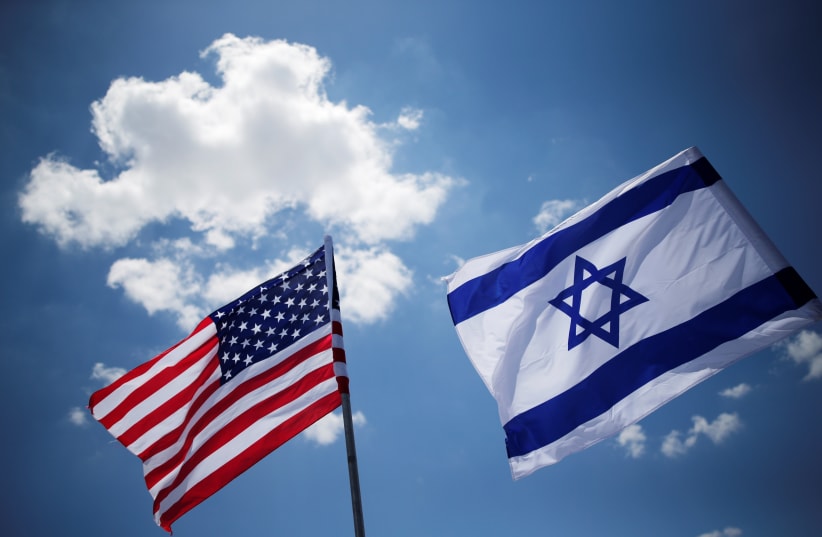While July 4, 1776, was designated as the new nation’s birthday, for the 2,000 Jews then dwelling in the United States, it was a parade in Philadelphia 12 years later – on July 4, 1788 – that solidified their identity in the glorious national enterprise.
Philadelphia, with its 40,000 residents, making it the nation’s most populous city, hosted the Grand Federal Procession on July 4, 1788. This parade, stretching for over one and a half miles, was not only the largest such street event thus far in American history, but it marked the first national celebration where Jewish clergy were treated on an equal level with their Christian counterparts. The parade was organized by Federalist politicians to link Independence Day with Pennsylvania’s ratification of the Constitution. Approval of the Constitution came after a 46-23 vote.
The pageant drew some 5,000 marchers grouped in 88 military, political, and trade categories. It was seen by 17,000 onlookers. The hope was that this impressive outpouring of nationalism would influence the three states that had not yet ratified the Constitution to follow suit.
The Pennsylvania Packet and Daily Advertiser (July 9, 1788), in addition to its page 1 account of the Grand Federal Procession, listed on page 3 the various categories of marchers: Reference 84 listed the “gentlemen of the Bar,” and Reference 86 listed the College of Physicians. Between the listings of the lawyers and doctors, the newspaper, in Reference 85, highlighted – in a one sentence, 17-word description of interfaith amity in connection with the celebration of the Constitution’s ratification victory – “the clergy of the different Christian denominations, with the rabbi of the Jews, walking arm in arm.”

Historians consider this “arm in arm” designation as landmark evidence of Jewish recognition and equality in the early republic.
The “rabbi” cited among the parade marchers was Jacob Raphael Cohen (1738-1811). At this point in American history, there were no ordained rabbis. Cohen functioned as the hazan (cantor) in Philadelphia’s only synagogue, Congregation Mikveh Israel, known today as the “Synagogue of the American Revolution.”
Arm in arm
During the parade, Cohen’s arm was linked with that of one of the most eminent ministers in America, Rev. William White ( b. 1748, d. 1836). White was minister of Philadelphia’s Christ Church, chaplain of the Continental Congress, and the first Episcopal Bishop of Philadelphia.
Delightfully observing the fellowship of the marching clergy, Dr. Benjamin Rush (b. 1746, d. 1813), a signer of the Declaration of Independence and a delegate to the Pennsylvania ratification convention, wrote:
“The clergy formed a very agreeable part of the procession. hey manifested the connection between religion and good government. Pains were taken to connect ministers of the most dissimilar religious principles together, thereby to show the influence of a free government in promoting charity. There could not have been a more happy emblem contrived of that section of the new Constitution Article VI, prohibiting religious qualifications for holding office, which opens all its power and offices alike not only to every sect of Christians but to worthy men of every religion.”
As a final sign of the good spirits of the parade’s sponsors, tables were set with kosher food, including soused salmon, bread, crackers, almonds, and raisins.
The story of the goodwill between the Jews of Mikveh Israel and the Christians of Christ Church endured beyond the parade excitement of July 4, 1788.
During the Revolutionary War, the Rev. Gershom Mendes Seixas (1745-1816), known as the “Patriot Rabbi,” fled from his New York City pulpit at Congregation Shearith Israel to Philadelphia’s Mikveh Israel, where he strengthened the stature of the synagogue.
Upon Rev Seixas’s return to New York City in 1784, Rev. Cohen, who succeeded Seixas, inherited a financially troubled congregation. Mikveh Israel launched a fundraising campaign, one of its first notable donors being Benjamin Franklin, who contributed a substantial gift of five pounds. Robert Morris, known as the financier of the American Revolution, also donated generously.
Since 1943, both congregations share a fellowship dinner, meeting alternately at each other’s house of worship. In the spirit of this goodwill, Christ Church contributed $1,000 in May 1961 to facilitate Mikveh Israel’s movement to new quarters.
America’s founding fathers believed that this new nation had the features of a New Zion or a Redeemer Nation. Adopting a unifying Constitution was pivotal. Through its floats and marchers, the Grand Federal Procession was designed to show this country’s productive capacity. Anti-Federalists who opposed the Constitution were considered sacrilegious. Benjamin Franklin took to task anti-Federalists as upstarts, replaying the revolt of Korach against Moses and Aaron as described in the Book of Numbers:
“Many still retained an affection for Egypt, the land of their nativity; and there, whenever they felt any inconvenience or hardship, through the natural and unavoidable effect of their change of situation… were not only for returning into Egypt but for stoning their deliverers.”
The Grand Federal Procession was a milestone for America’s small Jewish community. Embracing them “arm in arm” did not mean that Christian America waxed sentimental about the People of the Book. Rather, this gesture reduced some of the feelings of alienation, allowing them to be as productive as the parade’s theme advocated, contributing to the American enterprise.
The writer is an emeritus professor of political science at City University of New York and author of Strangers and Natives: A Newspaper Narrative of Early Jewish America.
